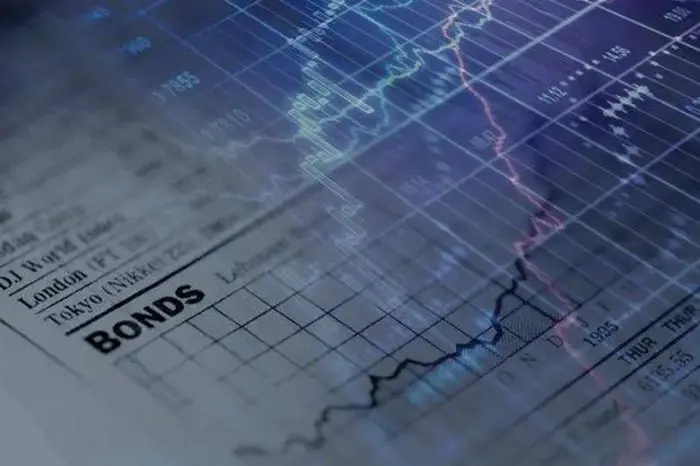
BIX ARTICLE
Bond outlook positive
Apr 08, 2025
|
5 min read
Featured Posts
Social Bonds Illustrative Use-Of-Proceeds Case Studies Coronavirus
Jul 06, 2020
|
2 min read
Sustainable Banking Network (SBN) Creating Green Bond Markets
Jul 06, 2020
|
2 min read
Why is Inflation Making a Big Comeback After Being Absent for Decades in the U.S.?
Mar 24, 2022
|
7 min read
SC issues Corporate Governance Strategic Priorities 2021-2023
Mar 29, 2022
|
3 min read

PETALING JAYA: Major global equity markets dived deeper into the red as investors are jittery about the worsening global trade war following the US imposition of reciprocal tariffs.
However, the Malaysian bond market appeared relatively insulated from the tariff blow, drawing RM2.1bil in foreign inflows last week.
In the longer run, how will US President Donald Trump’s reciprocal tariff stance affect foreign investor sentiment toward Malaysian bonds? Will Malaysia still be viewed as a safe haven within Asean?
RAM Rating Services Bhd head and senior economist Woon Khai Jhek told StarBiz that Trump’s reciprocal tariff stance is expected to heighten global economic uncertainty and amplify “risk-off” sentiment among investors.
“In the near term, this could lead to a reallocation of capital away from emerging market bonds, including Malaysia. Risk averse investors will likely choose to switch to more traditional safe-haven assets, such as US Treasuries or precious commodities like gold, as investors brace for a potential global economic slowdown,” he said.
Woon pointed out that the foreign outflow had contributed to a weakening of the ringgit against the US dollar, as the local currency depreciated to 4.47 against the greenback yesterday, from 4.43 on March 28.
“Barring a quick unwinding of the trade war, a return of foreign inflow into Malaysian Government Securities (MGS) is highly unlikely this month. We should expect foreign appetite to remain weak as risk aversion remains elevated in the near term.
“Investors will likely prefer to stay on the sideline while awaiting more clarity under the highly dynamic and fast evolving economic and financial market landscape,” he explained.
Woon, however, added that once market jitters subside and foreign investor risk aversion moderates, there could be a return of foreign inflows.
“Furthermore, Malaysia’s ability to maintain sound economic fundamentals, disciplined fiscal policies and political stability may help preserve its relative attractiveness. Thus, while short-term capital outflows may occur amid heightened risk aversion, if Malaysia’s domestic policies continue to effectively mitigate external vulnerabilities and sustain growth, its bonds could regain appeal relative to other regional markets,” he said.
Meanwhile, Bank Muamalat Malaysia Bhd chief economist Mohd Afzanizam Abdul Rashid said Trump’s reciprocal tariff should be positive for bonds as this may lead to lower bond yields as the anticipation for overnight policy rate cut gains momentum.
“The fear of slower global growth and a US recession could lead traders and investors to flock to safe haven assets such as government securities or govvies. Already, we have seen the 10-year US Treasury (UST) yields drop 21 basis points to 3.92% since the announcement of the reciprocal tariff on April 2.
“Given that the MGS and Government Investment Issues (GII) are highly correlated with the 10-year UST bonds, it is likely that the yields would follow the same manner. As of last Friday, the yields on 10-year MGS and 10-year GII have declined by 10 and 11 basis points to 3.67% and 3.66% respectively,” he said.
There is also a likelihood of shifts in capital flows in response to global trade tensions with “risk-off” behaviour driving flows into MGS.
“MGS yields have come quite considerably. I believe traders and investors are shifting to safe haven assets in order to shield themselves from the volatility,” Mohd Afzanizam added.
As such, he believed that given that bond yields are likely to go down, it would be wise to increase the bond duration as this will maximise the capital appreciation in the bond portfolio and typically, the longer the duration the higher the capital gain should the yields go lower.
He shared that govvies and high quality papers would be the best bet for bond investors, as they offer the best risk-adjusted returns in the current environment.
In terms of yield, are Malaysian yields expected to diverge from UST if a trade war escalates again? What might that mean for yield differentials and foreign inflows?
Woon said markets are already pricing in a US Federal Reserve (Fed) dovish pivot, which has led to a notable decline in UST yields. The 10-year UST yields fell to 4.01% on April 4 from 4.23% as of end-March.
“MGS yields have generally tracked these movements in the past and we expect Malaysian bonds yields to also face downward pressure during this period. We have seen MGS yield fall to 3.68% as at April 4 from 3.80% as of end-March,” he said.
As the dovish tilt has largely contained within the Fed for now, Woon sees a much larger decline in UST yield vis-a-vis MGS yields.
He said this has helped narrow the 10-year UST-MGS yield differential to 33.1 basis points (bps) as of April 4 from 47.3 bps as of end-March. In the short term, this dovish Fed stance should continue to help compress yield differentials between MGS and USTs.
“However, if Trump’s trade policies escalate further, the associated increase in global uncertainty and potential adverse impacts could compel investors to demand an additional risk premium on Malaysian bonds.
“In such a scenario, we might expect MGS yields to diverge upward from UST, resulting in wider yield differentials. We could also see a more prolonged streak of foreign outflow in reaction to that,” Woon explained.
Article By DOREENN LEONG
Source: Bond outlook positive (2025, 8 April). Retrieved from https://www.thestar.com.my/business/business-news/2025/04/08/bond-outlook-positive
Disclaimer
The information provided in this report is of a general nature and has been prepared for information purposes only. It is not intended to constitute research or as advice for any investor. The information in this report is not and should not be construed or considered as an offer, recommendation or solicitation for investments. Investors are advised to make their own independent evaluation of the information contained in this report, consider their own individual investment objectives, financial situation and particular needs and should seek appropriate personalised financial advice from a qualified professional to suit individual circumstances and risk profile. The information contained in this report is prepared from data believed to be correct and reliable at the time of issuance of this report. While every effort is made to ensure the information is up-to-date and correct, Bond and Sukuk Information Platform Sdn Bhd (“the Company”) does not make any guarantee, representation or warranty, express or implied, as to the adequacy, accuracy, completeness, reliability or fairness of any such information contained in this report and accordingly, neither the Company nor any of its affiliates nor its related persons shall not be liable in any manner whatsoever for any consequences (including but not limited to any direct, indirect or consequential losses, loss of profits and damages) of any reliance thereon or usage thereof.
YOU MAY ALSO LIKE
ARTICLE
Dec 03, 2025
|
6 min read
ARTICLE
Dec 03, 2025
|
5 min read
ARTICLE
Dec 02, 2025
|
6 min read
ARTICLE
Dec 01, 2025
|
6 min read


